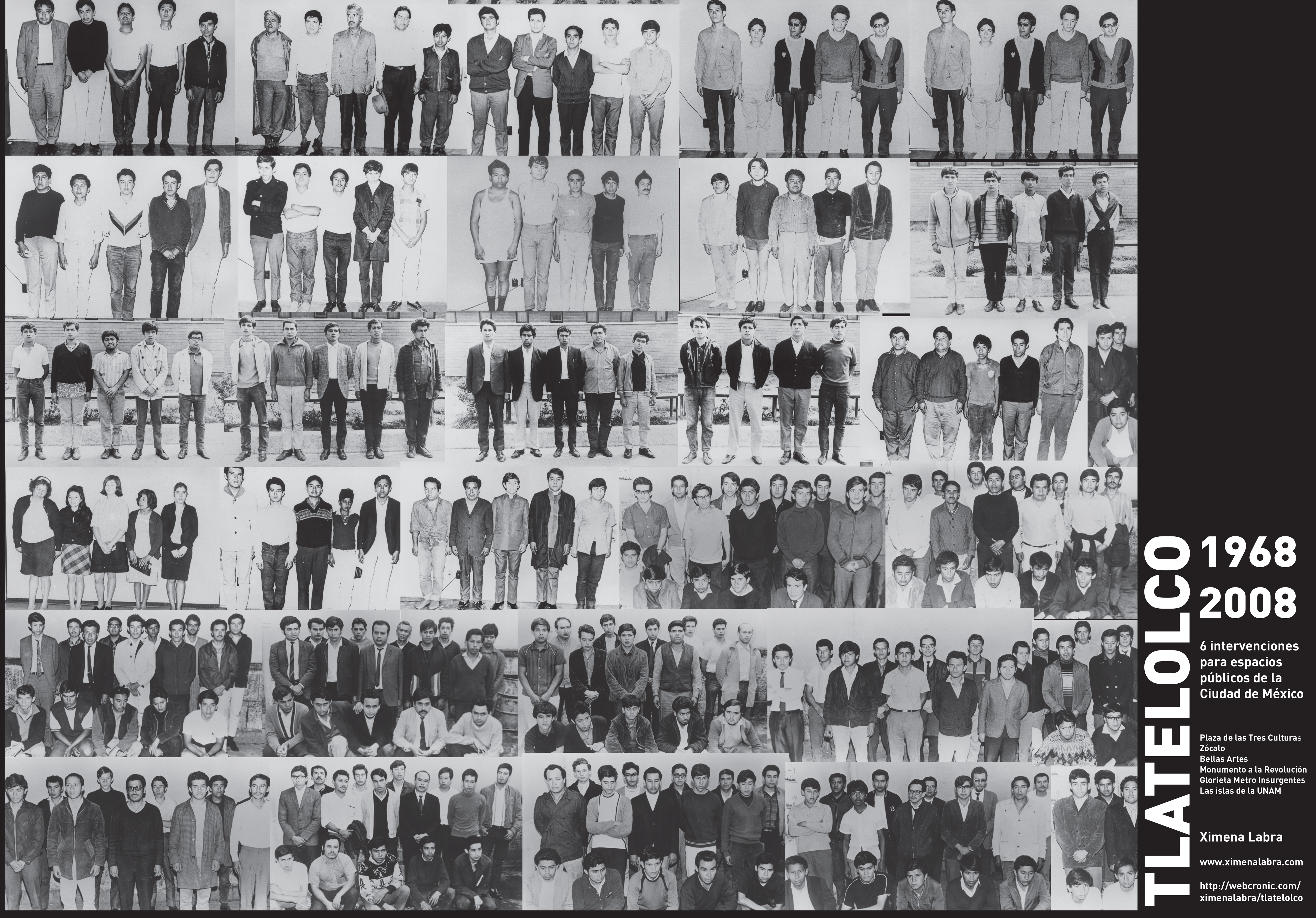
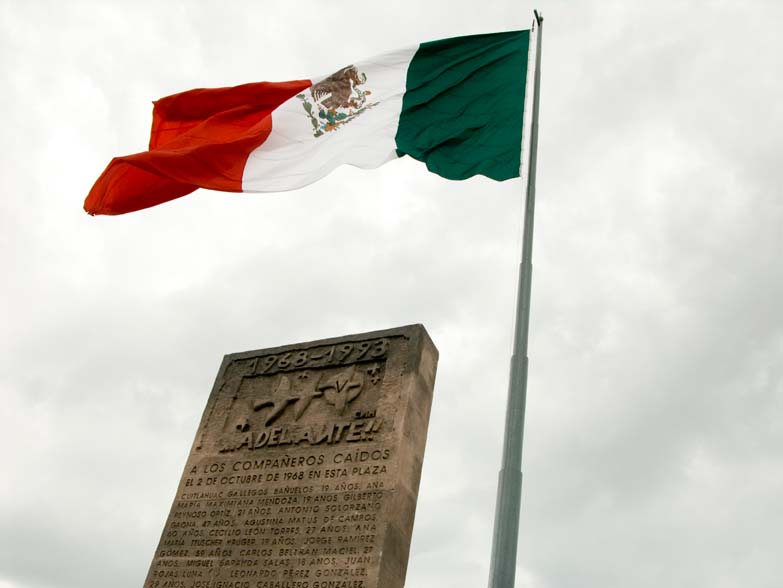
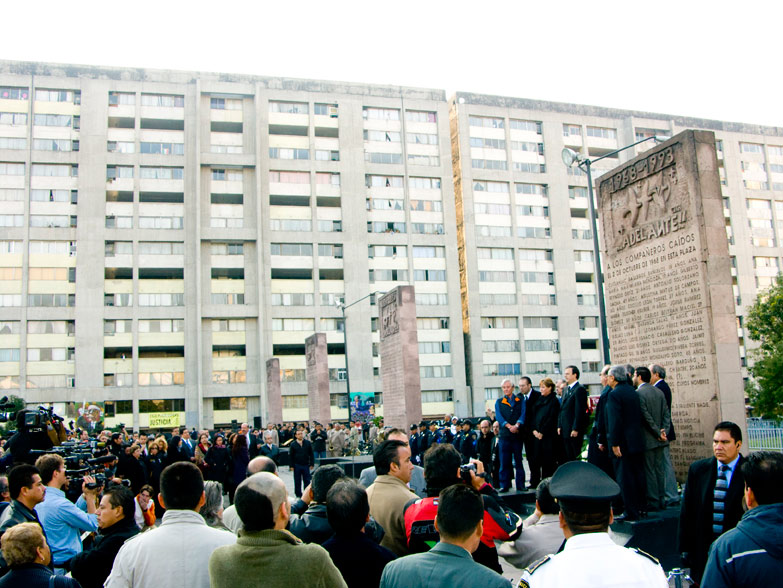
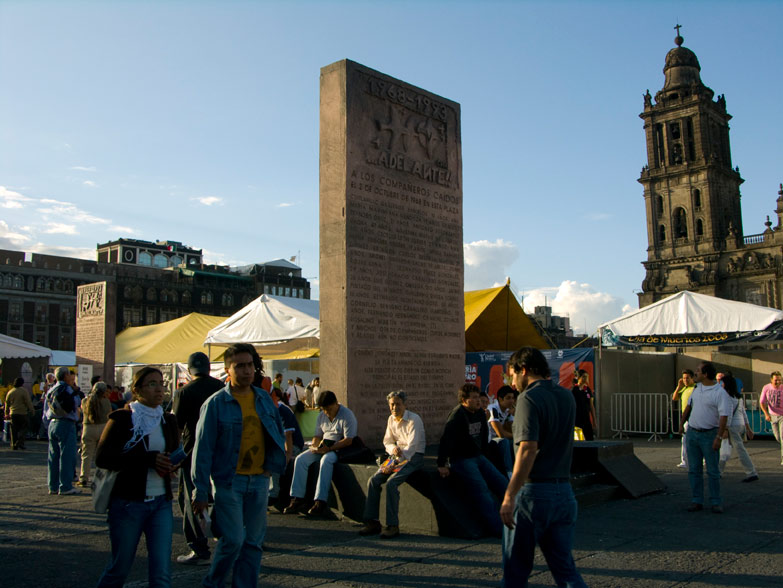
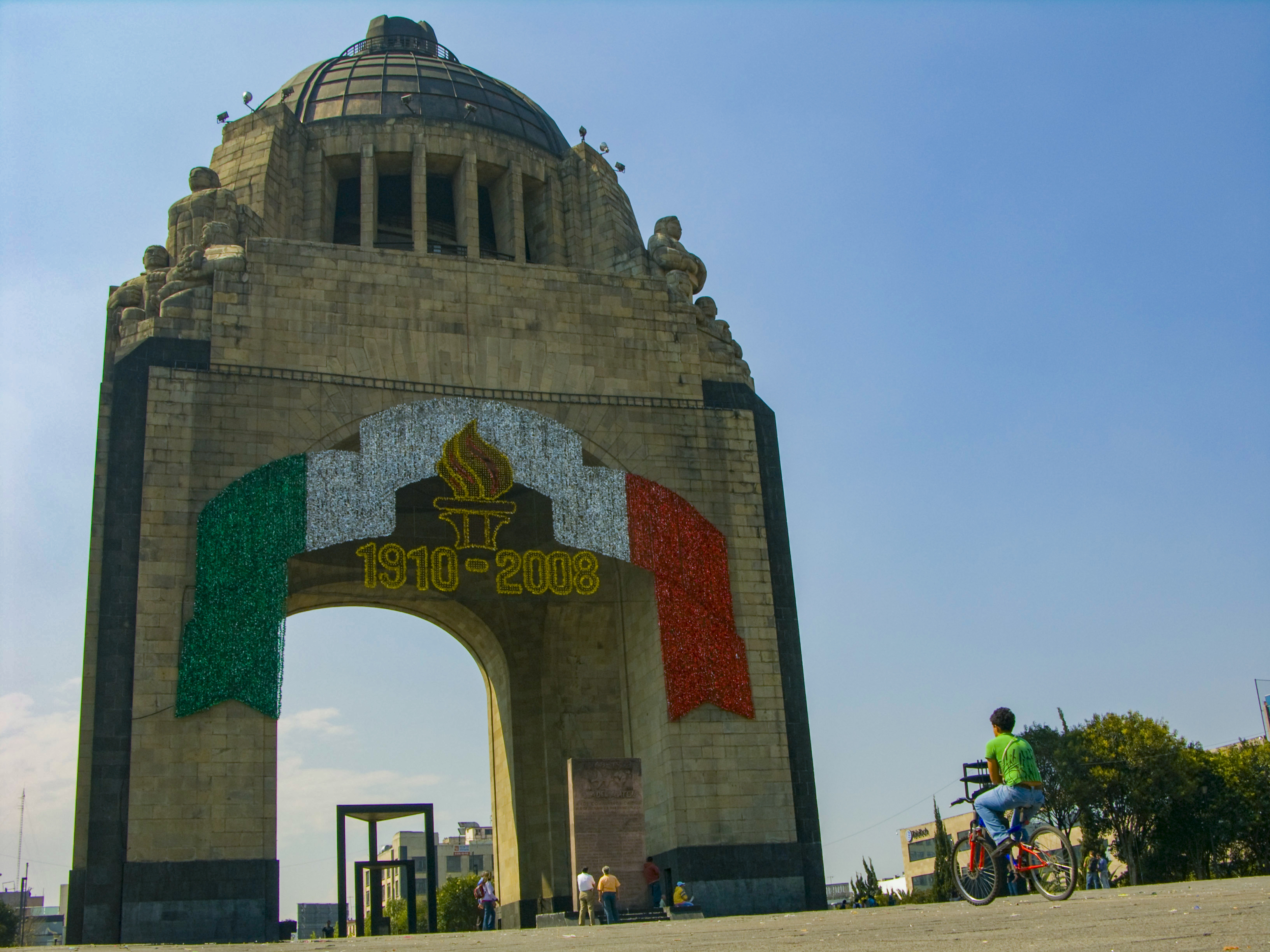
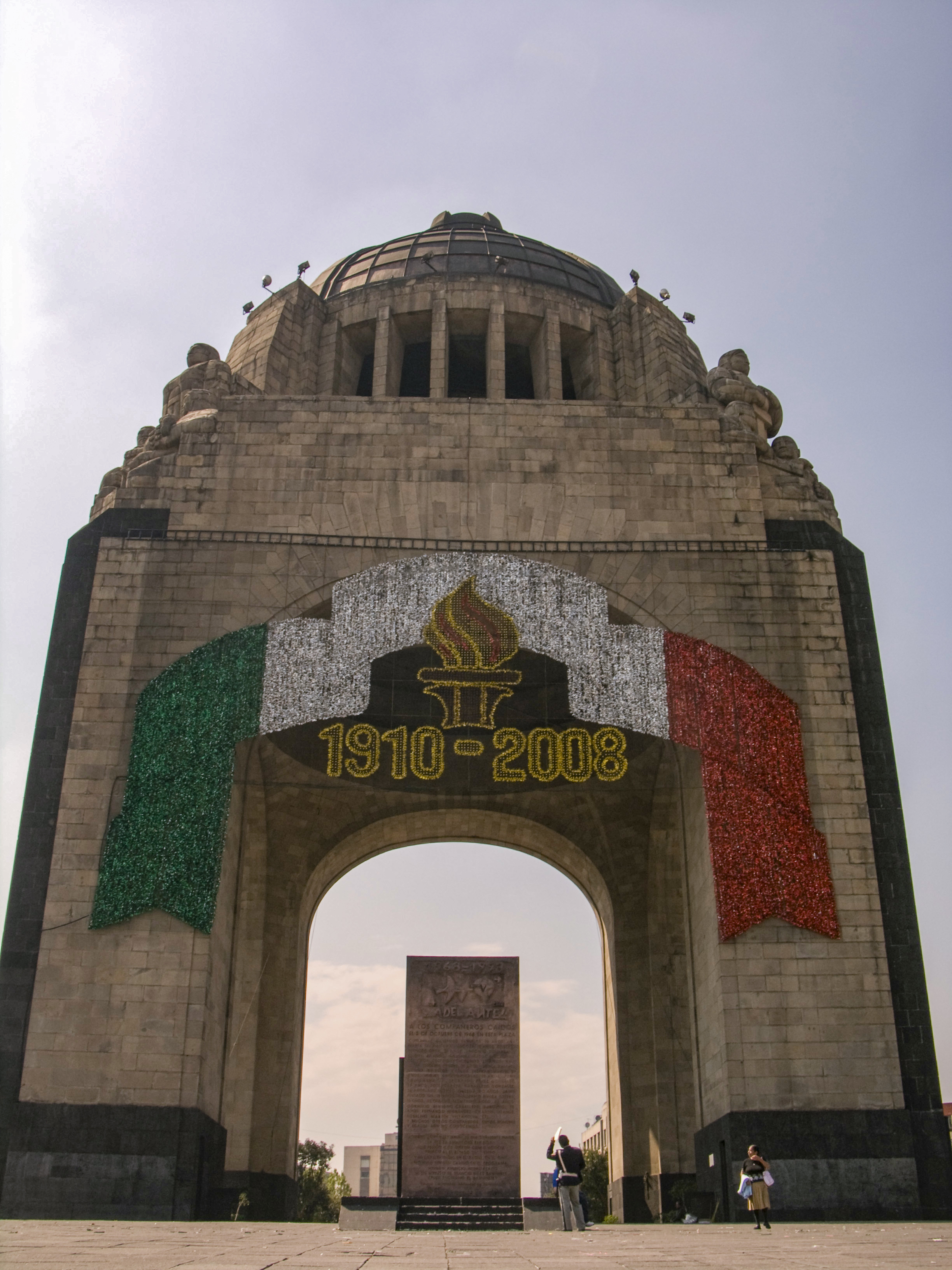
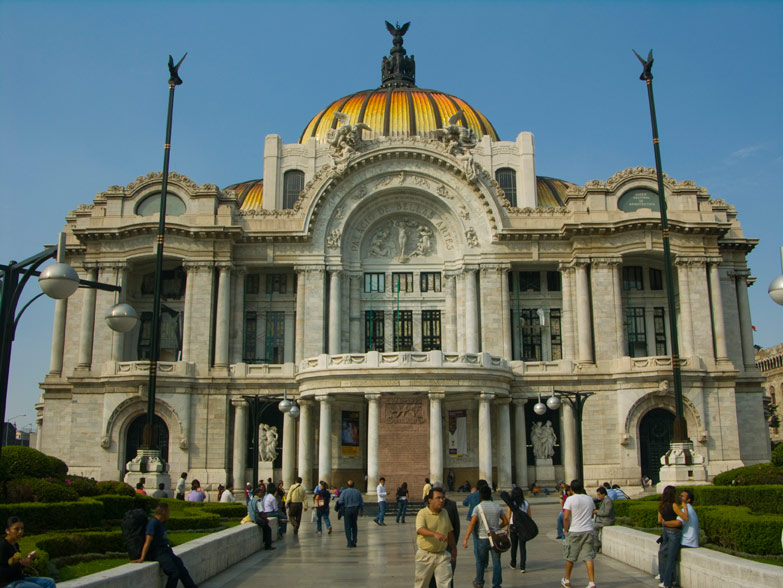
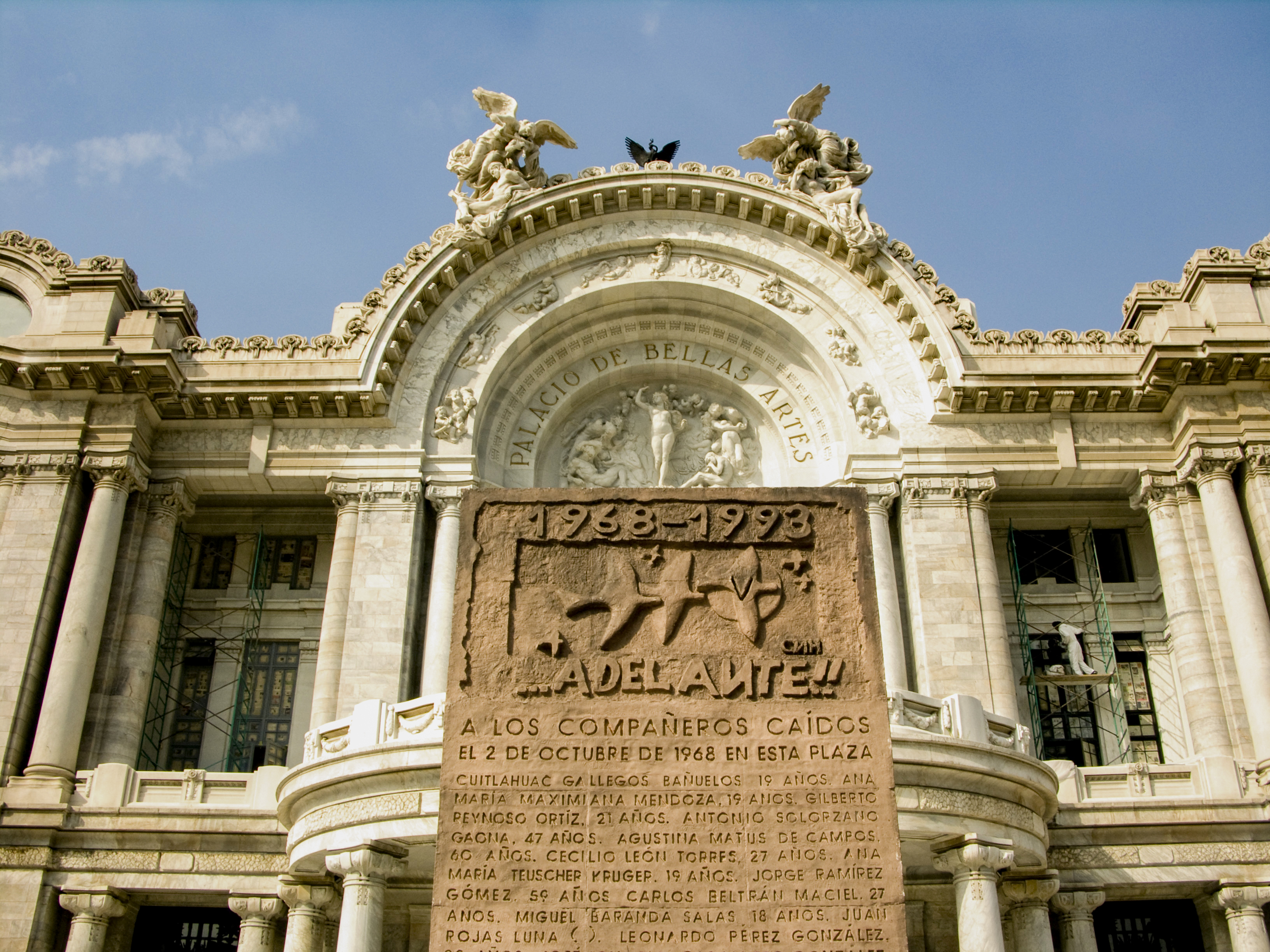
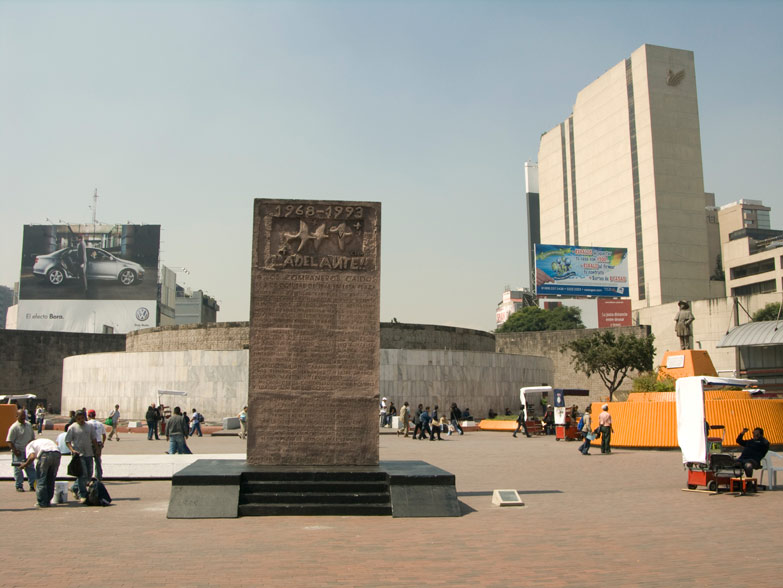
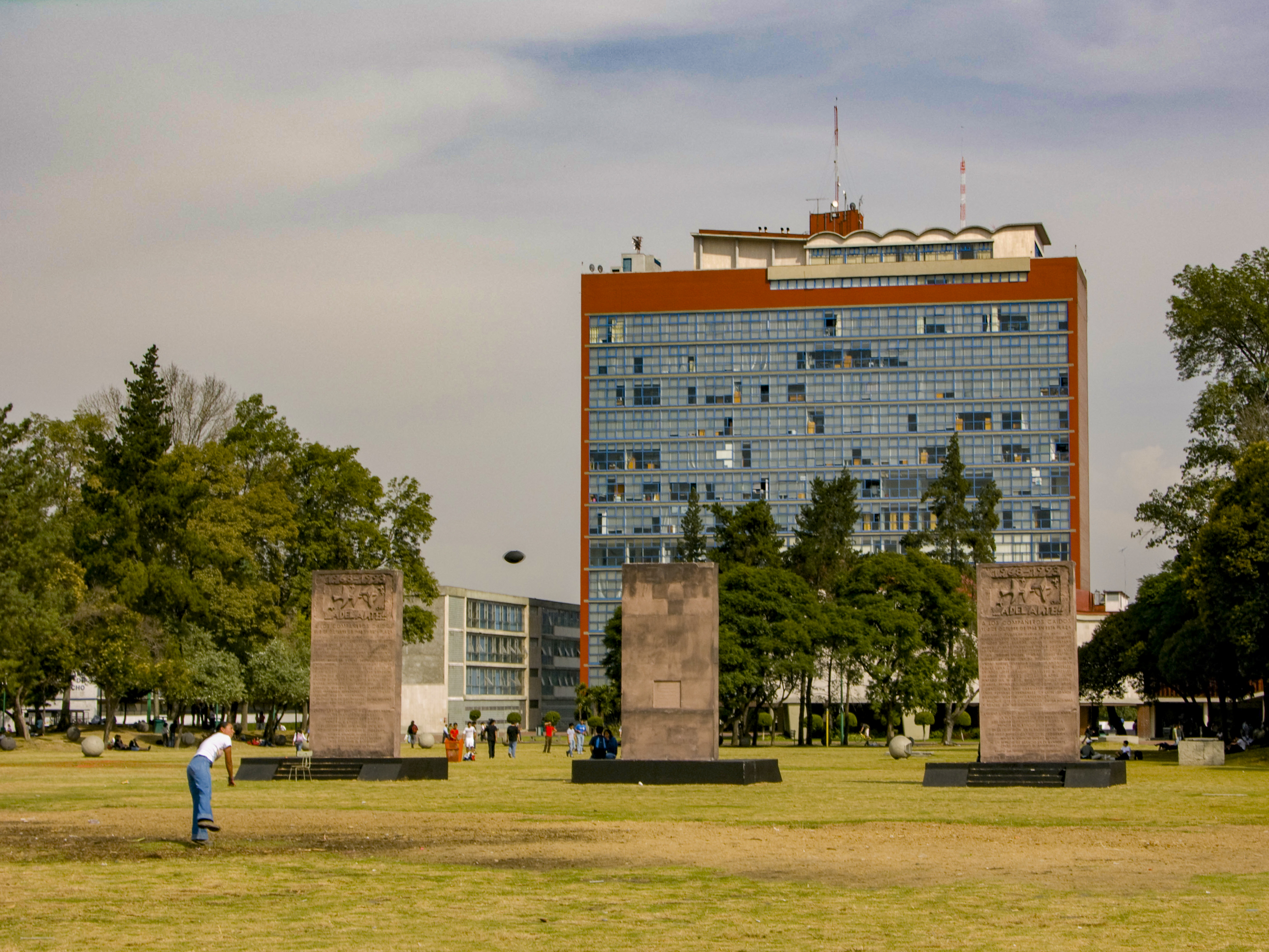
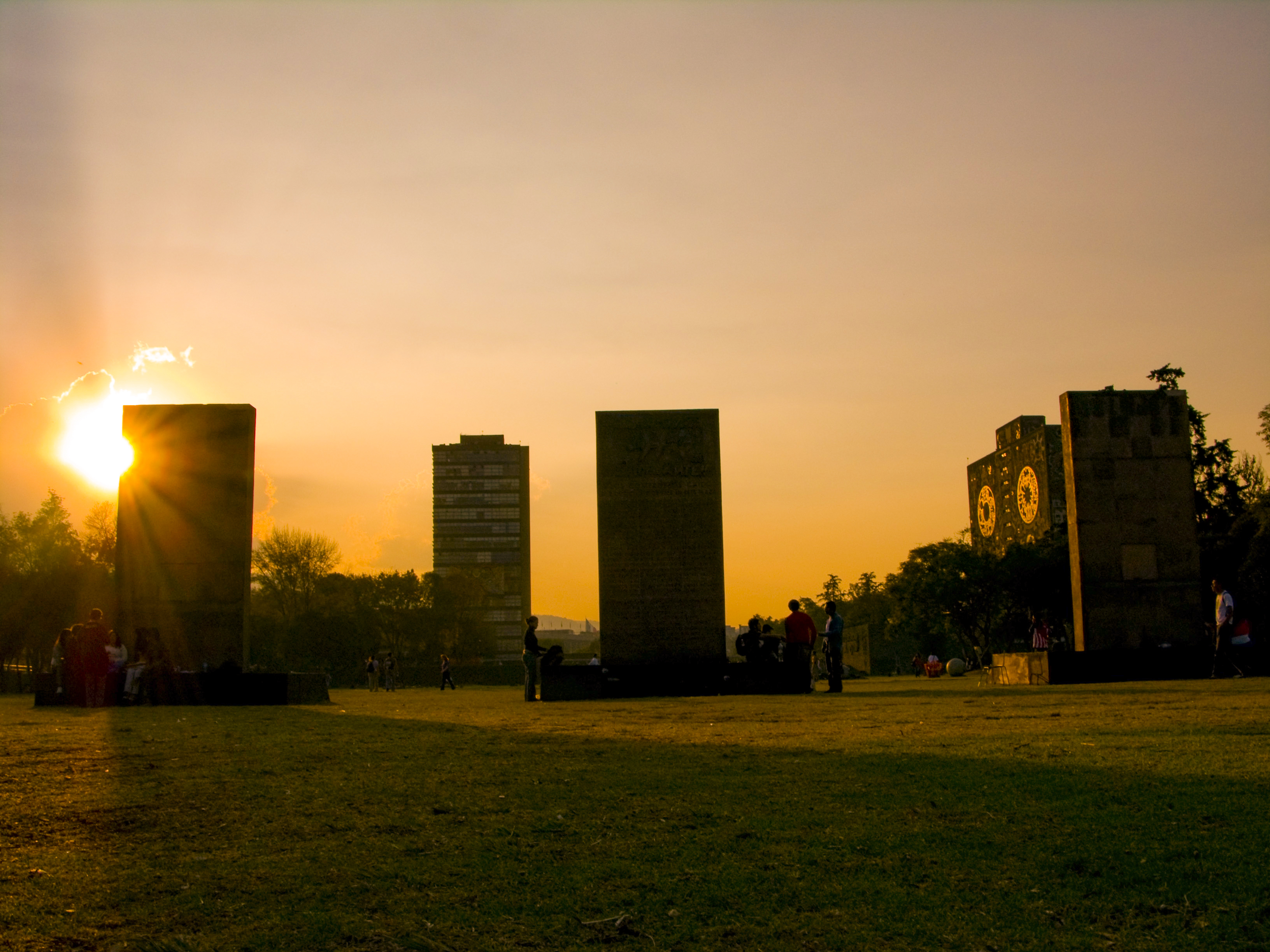
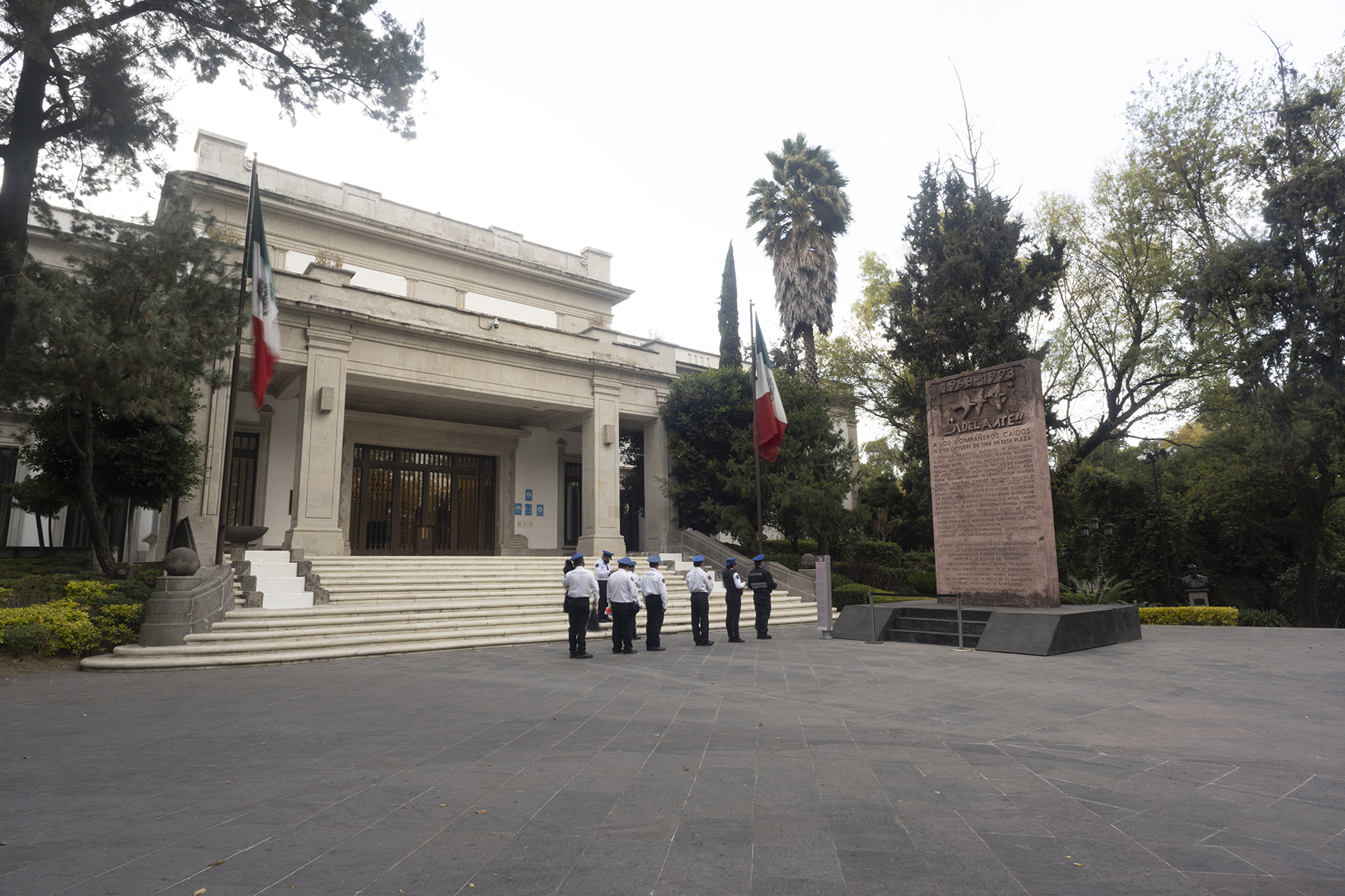
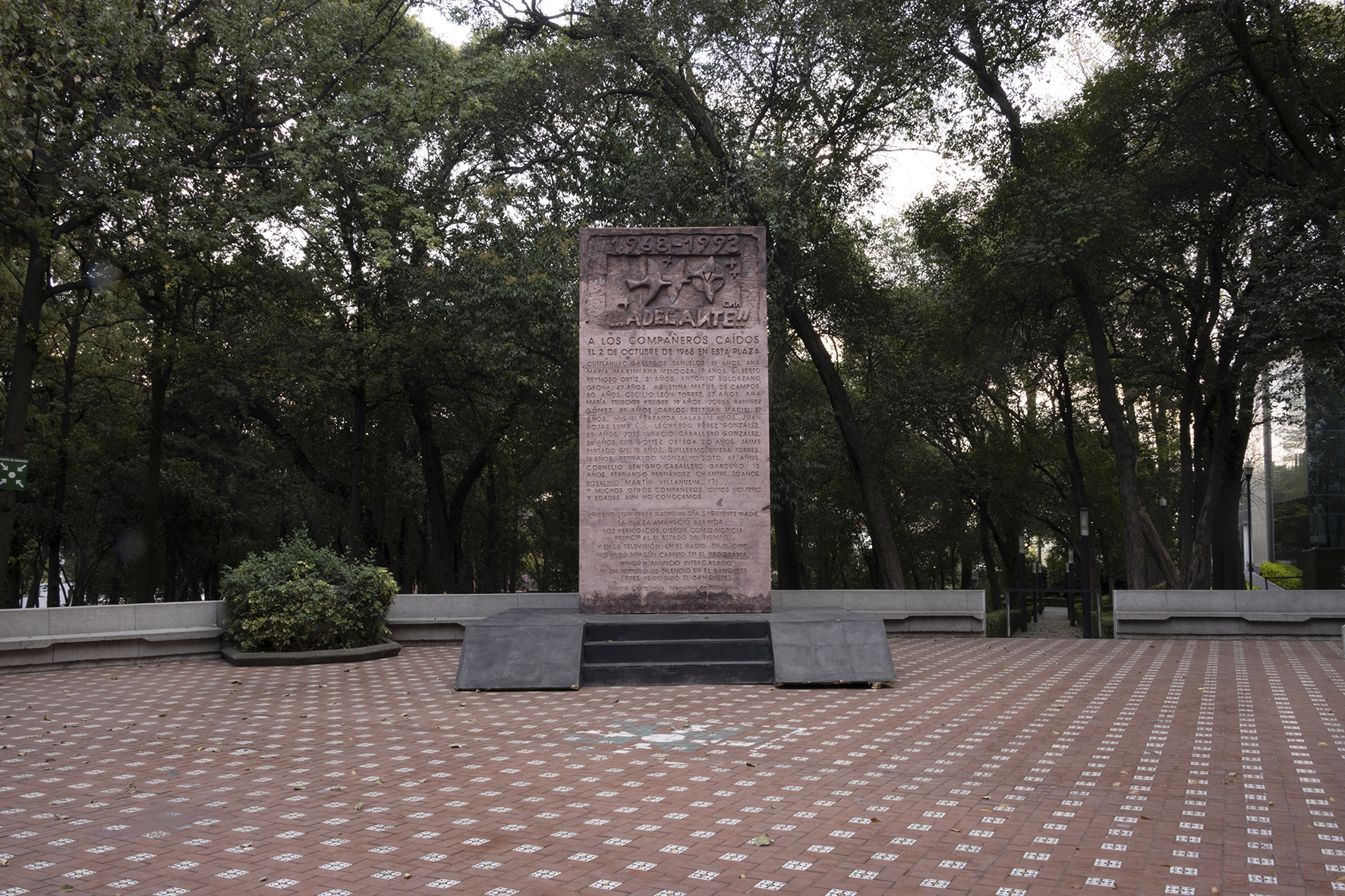
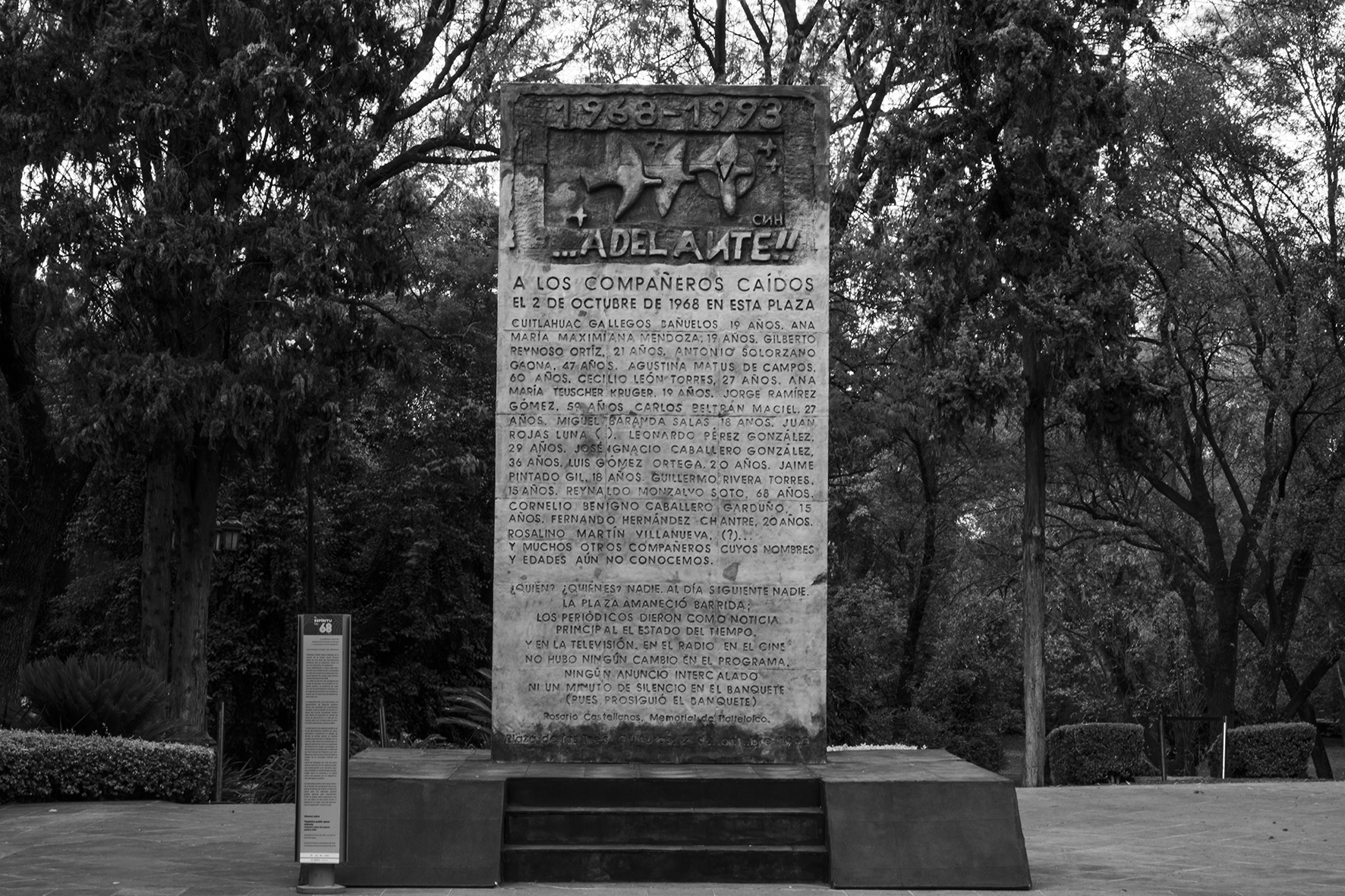
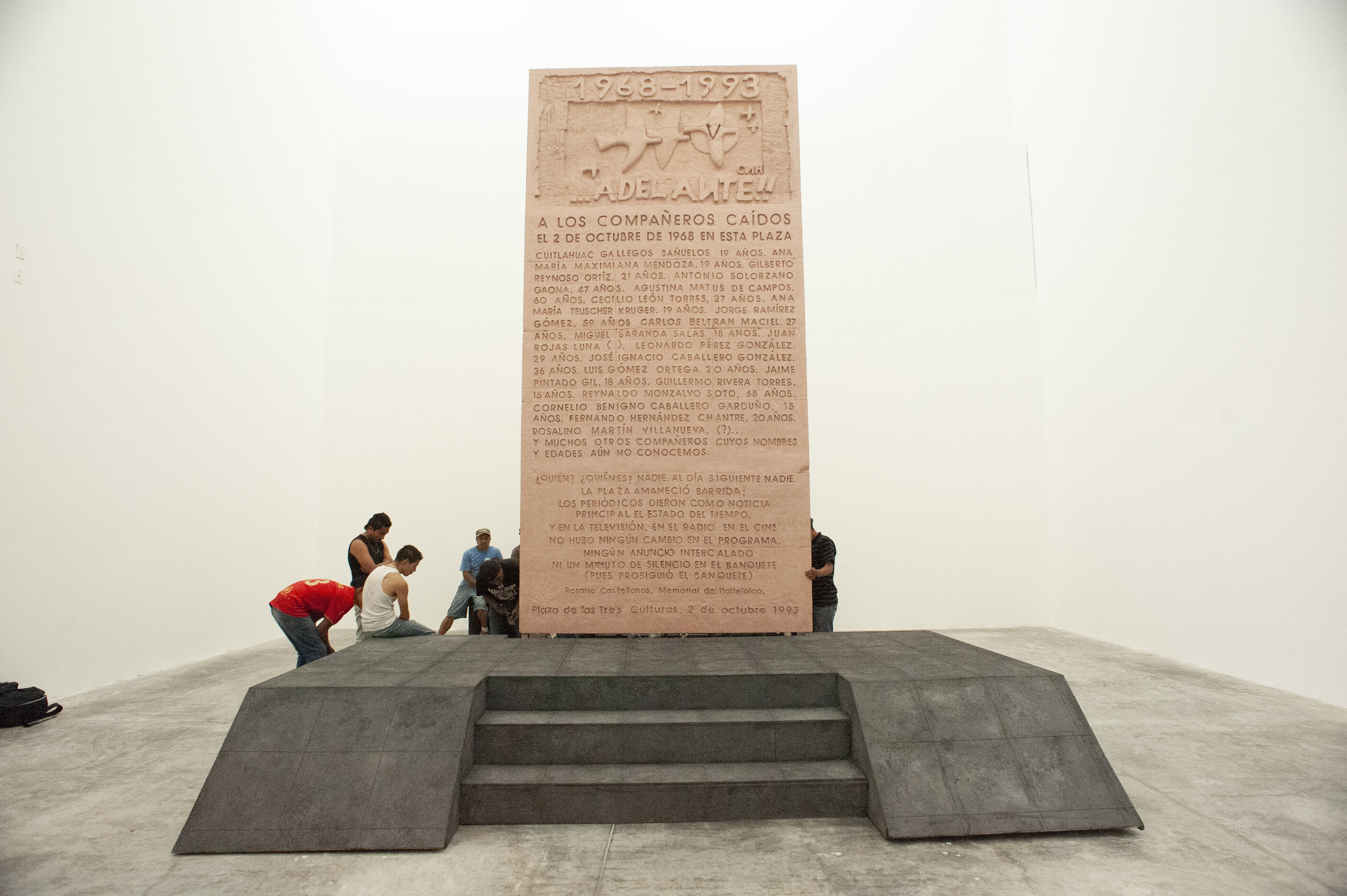
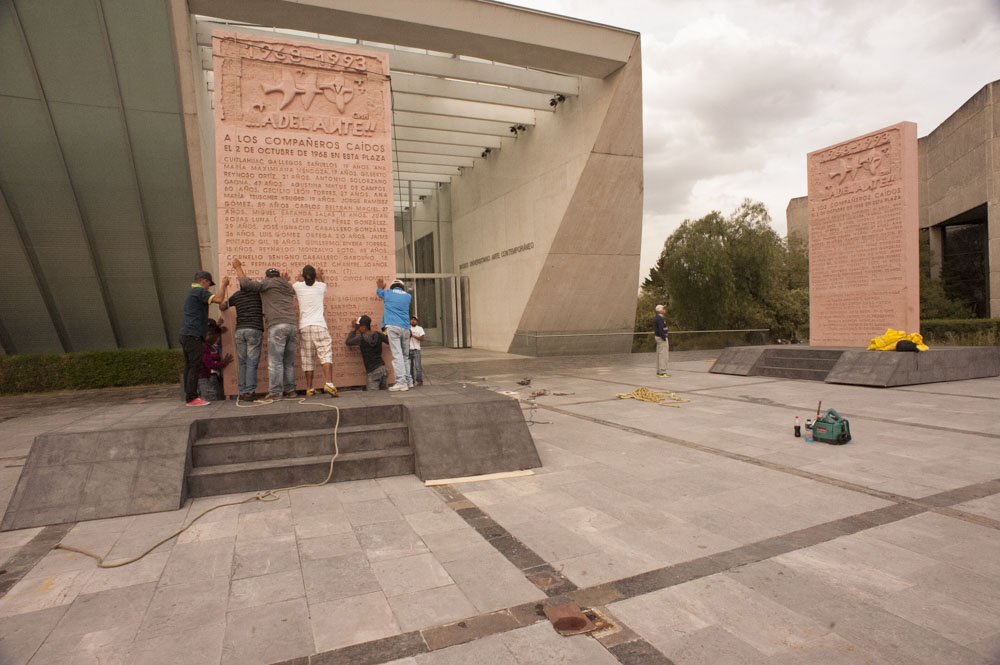
×
![]()
TLATELOLCO PUBLIC SPACE ODYSSEY
Series of interventions for 6 public spaces in Mexico City.
Sculptures (3): 5x4m2
Photos: 1.15x75cm
Video:NTSC 15 min
In 2008, Three clones of the sculpture at Tlatelolco appeared overnight in a series of strategic public places in Mexico City. This sculpture commemorates the well known 1968 student massacre on October 2.For two months, the sculptures travelled through the City, appearing on their own, overnight, with no ceremonies or preambles.
The places they appeared in are as follows:
Plaza de las Tres Culturas: del 2-8 de October 2008
Zócalo : 10-19 October 2008
Bellas Artes: 23 Oct-3 November 2008
Monumento a la Revolución: 3 Oct-3 November 2008
Glorieta Metro Insurgentes: 3 Oct-3 November 2008
UNAM:6-30 November 2008
From October to February 2020, exactly 52 years after the tragic events, two of these pieces have appeared at Los Pinos, the once presidential residency where the order to massacre the students at Tlatelolco originated in 1968. This is a particularly interesting moment in time. For the prehispanic calendars that ruled Tlatelolco before the conquest, 52 years is a full cycle of the sun and the moon, which means that the sun and the moon will actually be in the almost exact place as they were on October 2, 1968.
A GHOST WANDERS ABOUT MEXICO: Tlatelolco 1968-2008
Cuauhtémoc Medina (extract)
Hallucinatory monumentality. We have already discussed the artistic and historical failure inherent to the existing monument to the victims of 1968. It would seem impossible that the current slab that commemorates the deceased in the Tlatelolco Square could be ever able to activate the social memory of 1968, especially considering the extraordinary decay of the dwelling unit it belongs to.
Partly based on the inspiration of the beginning of the visionary 2001: A Space Odyssey (1968) by Stanley Kubrick, which depicts the discovery of an uncanny, minimalist sculpture in outer space, artist Ximena Labra devised a strategy to infuse the monument to the victims of Tlatelolco with hallucinatory powers. Using the very same casting techniques with which pre-Columbian or any
archaeological artefacts are reproduced for educational and museum purposes, she had the 1993 original monument reproduced in fiberglass in order to have three more life-size replicas. Then, for two months, she had her monuments temporarily erected either along the original monument, in order to have the four together, or installed in other, more symbolically effective public sites: the Zócalo main square, the Fine Arts Palace, the Insurgentes subway station, and the grounds of the Monumento de la Revolución [Monument to the Revolution]. This physical migration somehow restored the monument with a novelty value, bringing it to audiences that would probably never visit it in its
original site. For if people would never go to the monument, why not bring it to the people?
At the same time, the whole action behaved as a quasi-scientific, counterfactual test of the failure of this genre of sculpture object. Not only did the audiences generally take it for granted that this slab was not supposed to be located in the places where they encountered it or behave towards the
copies in the Tlatelolco square with no hesitation on their symbolic validity, but they subjected those copies to the specific spatial and practical conditions that prevailed in their new context. In a word, the
moving monuments failed to significantly transform their surroundings into a space of mourning. Seen in retrospect, the action became a detailed chronicle of the banality of urban art, allowing the artist to document the paradoxical, effective use of monuments in the city, either as new-age political fetishes,
street furniture, and even as places of erotic encounter. The refined poetry of Labra's negotiation of fantasy and banality make her work one of the most interesting readings of the behaviour of public art
that have been produced in the region.
UN FANTASMA DEAMBULA POR MEXICO: Tlatelolco 1968-2008
Cuauhtémoc Medina (extracto)
Monumentalidad alucinatoria."Ya hemos hablado del fracaso artístico e histórico inherente del monumento existente a las víctimas de 1968. Parecería imposible que la placa que actualmente conmemora a los muertos en la Plaza de Tlatelolco llegara alguna vez a activar la memoria social de 1968, especialmente teniendo en cuenta el extraordinario deterioro del conjunto habitacional en el que se encuentra. Inspirándose en parte en el principio de la visionaria película 2001: Una odisea del espacio (1968) de Stanley Kubrick, que representa el descubrimiento de una escultura misteriosa y minimalista en el espacio exterior, la artista Ximena Labra diseñó una estrategia para infundirle poderes alucinantes al monumento a las víctimas de Tlatelolco. Utilizando las mismas técnicas con las que se reproducen las obras precolombinas y otras piezas arqueológicas con fines educativos y museísticos, hizo reproducir el monumento original de 1993 en fibra de vidrio para obtener tres réplicas más a tamaño natural. A continuación, durante dos meses, hizo erigir temporalmente sus monumentos, tanto al lado del monumento original (para tener los cuatro juntos), como en otros lugares públicos de mayor eficacia simbólica: la céntrica plaza del Zócalo, el Palacio de Bellas Artes, la estación de metro Insurgentes y el recinto del Monumento a la Revolución. De alguna manera, esta migración física le devolvió al monumento un valor de novedad, llevándolo a un público que probablemente nunca lo hubiera visitado en su emplazamiento original. Si la gente no iba al monumento, ¿por qué no llevar el monumento a la gente?
Al mismo tiempo, toda la acción se llevó a cabo como una prueba hipotética, casi científica, del fracaso de este género de objetos escultóricos. El público daba por sentado que esta placa no debía estar ahí, pero se comportaba sin poner en duda la validez simbólica de las copias de la plaza de Tlatelolco, y sometía esas copias a las condiciones espaciales y prácticas específicas que prevalecían en su nuevo contexto. En una palabra, los monumentos móviles no lograron transformar significativamente su entorno en un espacio de luto. Vista en retrospectiva, la acción se convirtió en una crónica detallada de la banalidad del arte urbano, permitiendo al artista documentar el paradójico uso eficaz de los monumentos de la ciudad, ya fuera como fetiches políticos de la nueva era o como mobiliario urbano, e incluso como lugares de encuentro erótico. La poesía refinada de su contraste entre fantasía y banalidad hacen de la obra de Labra una de las lecturas más interesantes del comportamiento del arte público que se han producido en la región.